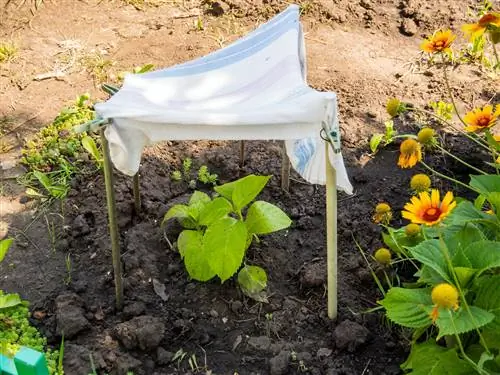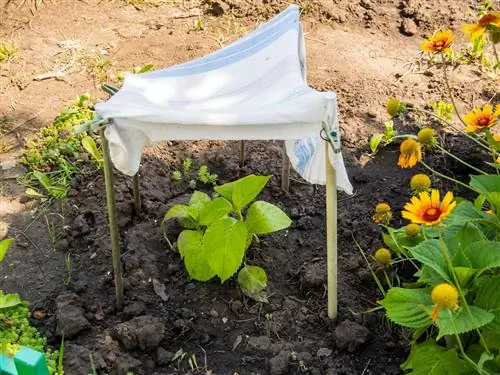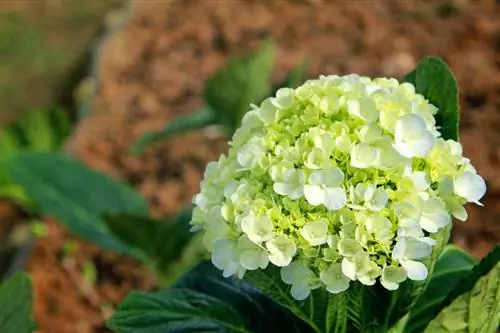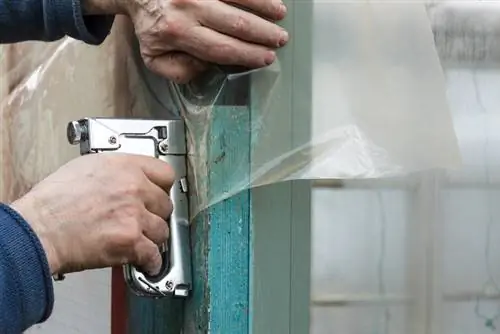- Author admin [email protected].
- Public 2024-01-05 20:48.
- Last modified 2025-01-23 11:22.
Hydrangeas love water. Accordingly, you feel more comfortable in the shade than in the sun and prefer moderate temperatures to intense heat. You can find out how to protect your hydrangeas from heat in this article.

How can I protect my hydrangeas from heat?
The most important measures in strong heat are: shading, watering and protecting from wind. In this way you ensure that the hydrangeas have enough water available and that evaporation remains as low as possible.
How well do hydrangeas tolerate heat?
Hydrangeas feel comfortable inpartial shade, too much sun means stress for them. The stronger the sun shines and the hotter it is, the less water is available to the water-loving ornamental shrubs. The hydrangea cannot tolerate drought at all.
How can I recognize sunburn on hydrangeas?
You can tell that your hydrangeas have received too much sun by their brown leaves and drooping flowers. If the sun burns severely, the leaves can dry out completely and curl up.
How can I protect my hydrangeas from heat?
The most important protective measure every gardener will take intuitively: Lots ofWatering! The water-loving plants need a lot of moisture, especially at high temperatures.
It is also important to counteract the strongevaporation on the leaves in hot weather. This aspect should not be underestimated, because hydrangeas can lose significantly more water through their leaves than they can absorb through their roots. A shady location that is protected from the wind can help. You can easily move potted plants around. With hydrangeas in the bed, it is recommended to protect the plants from the sun with a parasol (€78.00 on Amazon) or something similar and to keep out the wind by putting up raffia mats, fences or garden furniture.
When should I water my hydrangeas?
Watering has two positive effects on hydrangeas in hot weather: firstly, it provides the plants with the much-neededmoisture, secondly, the evaporating water has acooling effectwith yourself.
It is not only important that enough is watered, but the timing is also crucial. While the irrigation water evaporates quickly during the day, the hydrangeas have enough time to absorb the water through their roots overnight. The best time to water is thereforein the evening
You should water again in the morning in order to cool the substrate and the plants through evaporation during the day. When the hydrangeas If it is in the shade, you can exceptionally wet the leaves with water during the day. This counteracts evaporation. However, you should avoid this in a partially shaded or even sunny location, as the drops can cause pinpoint burns.
Tip
Treating sunburn on hydrangeas
If the hydrangea leaves its leaves drooping despite shading and sufficient watering, you should wait before cutting back the bush or even disposing of it. The hydrangeas usually recover overnight if they are watered thoroughly in the evening. However, it may take until after the heat wave for them to fully recover. Make sure that the already stressed plants are protected even better from heat in the future using the measures mentioned above.






